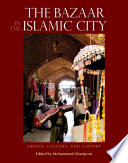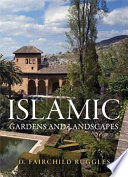The Bazaar In The Islamic City
Design, Culture, And History

Overview
The Middle Eastern bazaar is much more than a context for commerce: the studies in this book illustrate that markets, regardless of their location, scale, and permanency, have also played important cultural roles within their societies, reflecting historical evolution, industrial development, social and political conditions, urban morphology, and architectural functions. This interdisciplinary volume explores the dynamics of the bazaar with a number of case studies from Cairo, Damascus, Aleppo, Nablus, Bursa, Istanbul, Sana'a, Kabul, Tehran, and Yazd. Although they share some contextual and functional characteristics, each bazaar has its own unique and fascinating history, traditions, cultural practices, and structure. One of the most intriguing aspects revealed in this volume is the thread of continuity from past to present exhibited by the bazaar as a forum where a society meets and intermingles in the practice of goods exchange-a social and cultural ritual that is as old as human history.











